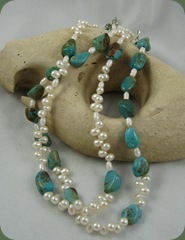One of my favorite techniques about thinking is Six Thinking Hats by Edward DeBono. Dr. DeBono provided all of us with a plethora of books and materials from which to draw ideas for promoting various type of thinking. I was able to glean much from his work that I utilized both in workshop for teachers and articles for publications.
Six Thinking Hats is simple and straightforward. Each color hat represents a specific way of thinking: White is for factual thinking; Black is more thinking about drawbacks or things that might go wrong; Yellow is for thinking about positive results and possibilities; Red is for thinking with emotion; Green is for creative thinking; and Blue is for guiding or organizing the other ways of thinking. Children I’ve worked with as young as Kindergarten have been able to understand and utilize the hats. It has been my experience that although the type of thinking we use most readily changes according to our situation or environment, most of us do have one type of thinking that is our style. I am a natural black hat thinker. It is easier for me to tell all the things that could go wrong with a design or plan than it is for me to see all the possibilities. Black hat thinking isn’t bad. I’ve probably prevented many a disaster in my life by having critical thoughts at the forefront. (I probably saved my children from excessive trips to the emergency room by seeing the negative results of their antics before they acted.) Yet, it can be a real downer. I wonder how many wonderful opportunities I’ve missed because I was squelched through critical thinking. If I don’t keep my natural Black Hat thinking under wraps, part of the time it can be difficult for those around me and can certainly hold back my design work.
For several years, I’ve tried to be conscious of practicing other types of thinking. White Hat = no problem, I can give you the factual details; Red Hat = no problem, crying, yelling and caring are all in my repertoire; Green Hat = I work on creative thinking all the time; Blue Hat = remembering to organize thinking works as I try to use the other colors or gently ask a complaining person if they can come up with any positives about their situation; Yellow Hat = hmmm . . . I think this would be easier if I didn’t listen to the news reports.
It seems to me that I might apply the Six Thinking Hats in the critic of creative work. It’s not necessary to use all the hats each time we apply the technique. Simply select those that are needed. There are two pictures below, but for an example, take a look at the turquoise and pearl necklace that’s on it’s way to a customer in Maine.  White Hat thinking allows me to write on the tag attached to the piece that it is made of turquoise and pearls and that the lobster clasp is sterling silver. Wearing my Red Hat, I can tell you that I didn’t feel very excited about this piece when the customer requested it because it was quite simple. Yellow Hat thinking reminds me that I made this pretty quickly with a minimum of steps and was able to mix together some pearls remaining from another project. It’s also a plus that this customer purchases a good deal of turquoise and pearls and I know I can make her happy with this piece. I also feel I should be grateful that I don’t have to think very hard to complete this piece. Black Hat thinking, however, tells me that I’m not learning much from making this combination of beads AGAIN. If I use Blue Hat Thinking to organize those thoughts
White Hat thinking allows me to write on the tag attached to the piece that it is made of turquoise and pearls and that the lobster clasp is sterling silver. Wearing my Red Hat, I can tell you that I didn’t feel very excited about this piece when the customer requested it because it was quite simple. Yellow Hat thinking reminds me that I made this pretty quickly with a minimum of steps and was able to mix together some pearls remaining from another project. It’s also a plus that this customer purchases a good deal of turquoise and pearls and I know I can make her happy with this piece. I also feel I should be grateful that I don’t have to think very hard to complete this piece. Black Hat thinking, however, tells me that I’m not learning much from making this combination of beads AGAIN. If I use Blue Hat Thinking to organize those thoughts  I can be left with a positive feeling as I wrap up the piece. I think the best order might be White, Black, Red and finally Yellow. It works for me and I’m thinking how good it is to sell something!
I can be left with a positive feeling as I wrap up the piece. I think the best order might be White, Black, Red and finally Yellow. It works for me and I’m thinking how good it is to sell something!